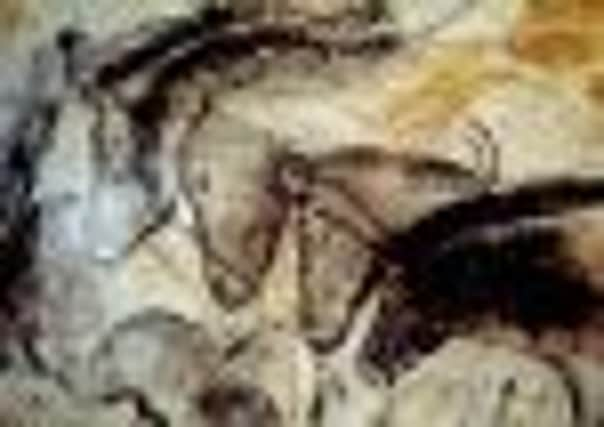DNA on the spot to prove realism of cave art


But new DNA evidence from ancient bones has proved the horses depicted in prehistoric cave paintings actually existed 25,000 years ago.
For many years archaeologists have questioned whether works of art from the Palaeolithic period are reflections of the natural environment or have deeper abstract or symbolic meanings.
Advertisement
Hide AdAdvertisement
Hide AdThis is particularly true of the French cave painting known as The Dappled Horses of Pech-Merle, which is more than 25,000 years old and clearly shows white horses with dark spots.
The dappled horses’ spotted coat pattern bears a strong resemblance to a pattern known as “leopard” in horses today.
However, as some researchers believed a spotted coat gene was unlikely at this time, pre-historians have often argued for more complex explanations, suggesting the pattern was in some way a form of abstract art.
An international team of researchers, including professors from the University of York, have spent the past few years analysing bones and teeth of 31 horses from Europe and Asia, dating from as far back as 35,000 years ago, in an attempt to end the mystery.
Advertisement
Hide AdAdvertisement
Hide AdAnd following a major scientific breakthrough, they have provided evidence for the first time that the spotted horses existed after discovering the gene in the ancient bones.
They also found further evidence of a black and bay coat colours, meaning that all the colours that can be seen in cave paintings – bay, black and spotted – existed in the prehistoric horse population.
Professor Michi Hofreiter, from the Department of Biology at the University of York, said: “Many archaeologists believe that the cave paintings have a lot of symbolic meaning – specifically the spotted horses. It has been argued that the spots themselves have a symbolic meaning.
“Our results suggest that at least for wild horses, Palaeolithic cave paintings, including the remarkable depictions of spotted horses, were closely rooted in the real-life appearance of animals.
Advertisement
Hide AdAdvertisement
Hide Ad“Our findings lend support to the argument that cave paintings constitute reflections of the natural environment of humans at the time and may contain less of a symbolic connotation than often assumed.
“To me the results were a bit of a surprise because the spotted coat colour looks rather unusual and it was a surprise to find it on ancient horses.”
The data and laboratory work was led by Dr Melanie Pruvost, from the Department of Evolutionary Genetics at the Leibniz Institute for Zoo and Wildlife Research and the Department of Natural Sciences at the German Archaeological Institute, both in Berlin. The results were replicated at the University of York.
Dr Pruvost said: “We are just starting to have the genetic tools to access the appearance of past animals and there are still a lot of question marks and phenotypes for which the genetic process has not yet been described. However, we can already see that this kind of study will greatly improve our knowledge about the past.
Advertisement
Hide AdAdvertisement
Hide Ad“Knowing that leopard spotted horses were present during the Pleistocene in Europe provides new arguments or insights for archaeologists to interpret cave arts.”
Professor Terry O’Connor from the University of York’s Department of Archaeology was involved in interpretation of the results. He said: “Representations of animals from the Palaeolithic period have the potential to provide first-hand insights into the physical environment that humans encountered thousands of years ago. However, the motivation behind, and therefore the degree of realism in these depictions is hotly debated.
“Our research removes the need for any symbolic explanation of the horses. People drew what they saw, and that gives us greater confidence in understanding Palaeolithic depictions of other species as naturalistic illustrations.”
Horse that looks like a leopard
Leopard spotting in modern horses is characterised by white spotting patterns that range from horses having a few white spots on the rump to horses that are almost completely white.
Advertisement
Hide AdAdvertisement
Hide AdThe white area of these horses can also have pigmented oval spots known as “leopard spots”.
Dr Monika Reissmann, from Humboldt University’s Department for Crop and Animal Sciences, said: “This phenotype was in great demand during the Baroque Age.
“But in the following centuries the leopard complex phenotype went out of fashion and became very rare.
“Today leopard complex is a popular phenotype in several horse breeds including Knabstrupper, Appaloosa and Noriker.”